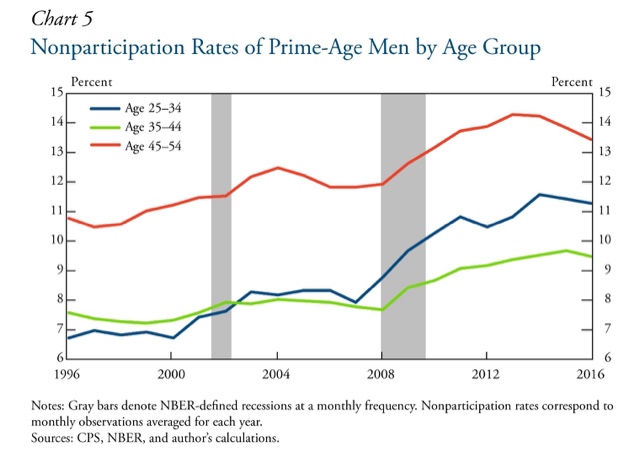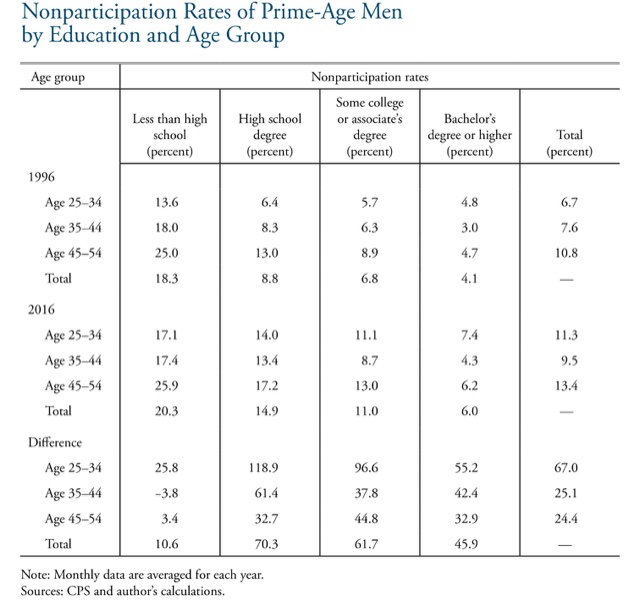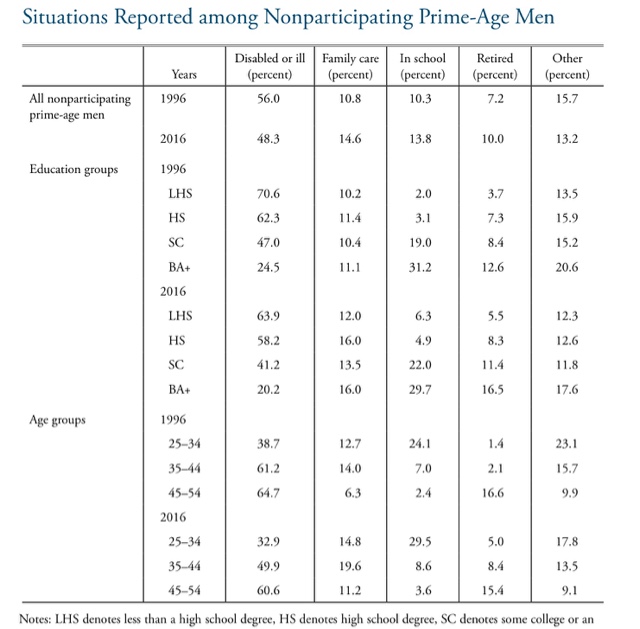A follow-up on the reasons for prime age labor force non-participation Here is something interesting I found in an article by staffers at the Kansas City Fed a couple of weeks ago. They broke down the 25-54 prime age labor force participation group for men into 10 year slices, by education, and by reason for not participating in the labor force. They focused on men, because including women confounds the results by the secular societal change whereby women entered the labor force en masse between the 1960s and 1990s. First of all, it turns out that the prime decade driving the increase in non-participation is the 25-34 age group: That finding is amplified by breaking down each prime age decade by education level: Across all age
Topics:
NewDealdemocrat considers the following as important: Featured Stories, Journalism, Taxes/regulation, US/Global Economics
This could be interesting, too:
Ken Melvin writes A Developed Taste
Joel Eissenberg writes How Tesla makes money
Angry Bear writes True pricing: effects on competition
Angry Bear writes The paradox of economic competition
A follow-up on the reasons for prime age labor force non-participation
Here is something interesting I found in an article by staffers at the Kansas City Fed a couple of weeks ago.
They broke down the 25-54 prime age labor force participation group for men into 10 year slices, by education, and by reason for not participating in the labor force. They focused on men, because including women confounds the results by the secular societal change whereby women entered the labor force en masse between the 1960s and 1990s.
First of all, it turns out that the prime decade driving the increase in non-participation is the 25-34 age group:
That finding is amplified by breaking down each prime age decade by education level:
Across all age levels, the biggest jumps by far in non-participation were among those with high school degrees and some college, and especially so among the youngest decade.
Next, they broke down non-participants by the reason given for non-participation, using the monthly household survey that is issued as part of the jobs report. The Census Bureau asks non-participants if the reason they are not in the labor force is disability, family care, education, retirement, or other:
In accord with the above, among the 25-34 age group, the biggest jump in the reason for non-participation was education. Interestingly, among the 35-44 and 45-54 age groups, the big increases were family care and retirement(!). The rate of those claiming disability actually decreased (a big surprise). These increases were similar across all levels of educational attainment.
I have two takeaways from this: first, there is likely an “education arms race” going on, where ever-increasing levels of education are deemed necessary in the competition to obtain good-paying jobs. Seventy-five years ago, a high school degree is what was necessary. Forty years ago it was a college degree. Now it may take a graduate degree. Ultimately this is a self-defeating waste of resources, and worth its own lengthy article.
Second, this is evidence for the “child care cost crunch” I wrote about several years ago. As the cost of daycare has increased, and wage growth has decreased, an increasing share of households are finding that it makes more sense for one spouse — in this case, “Mr. Mom’s” — to stay home and raise the kids.



